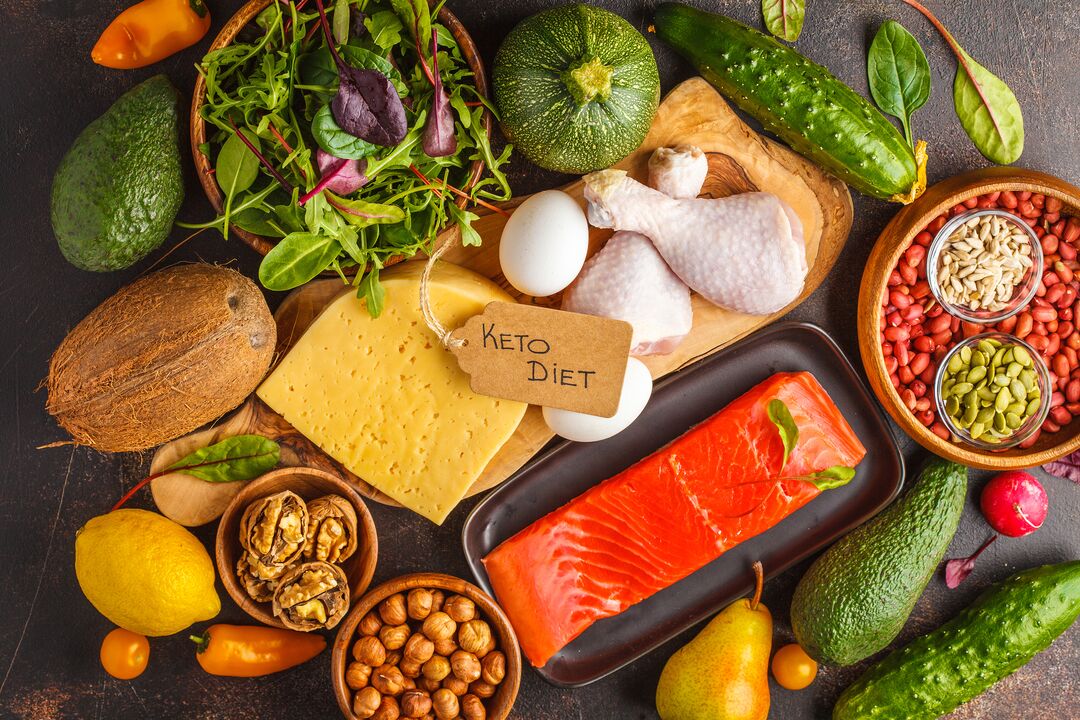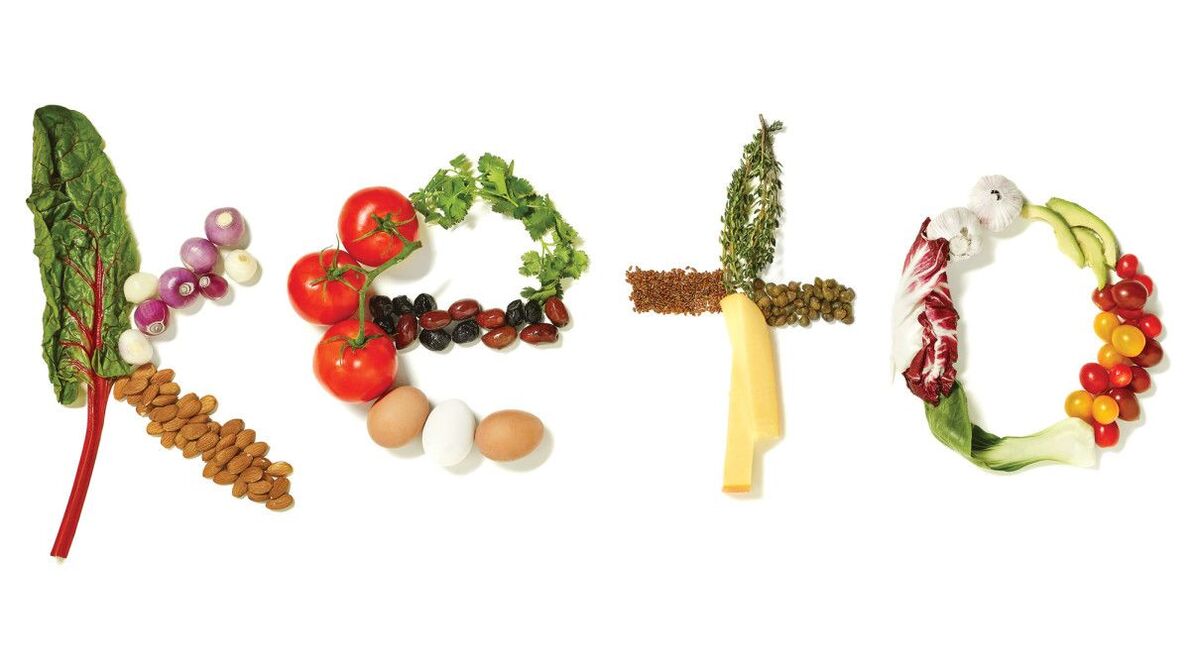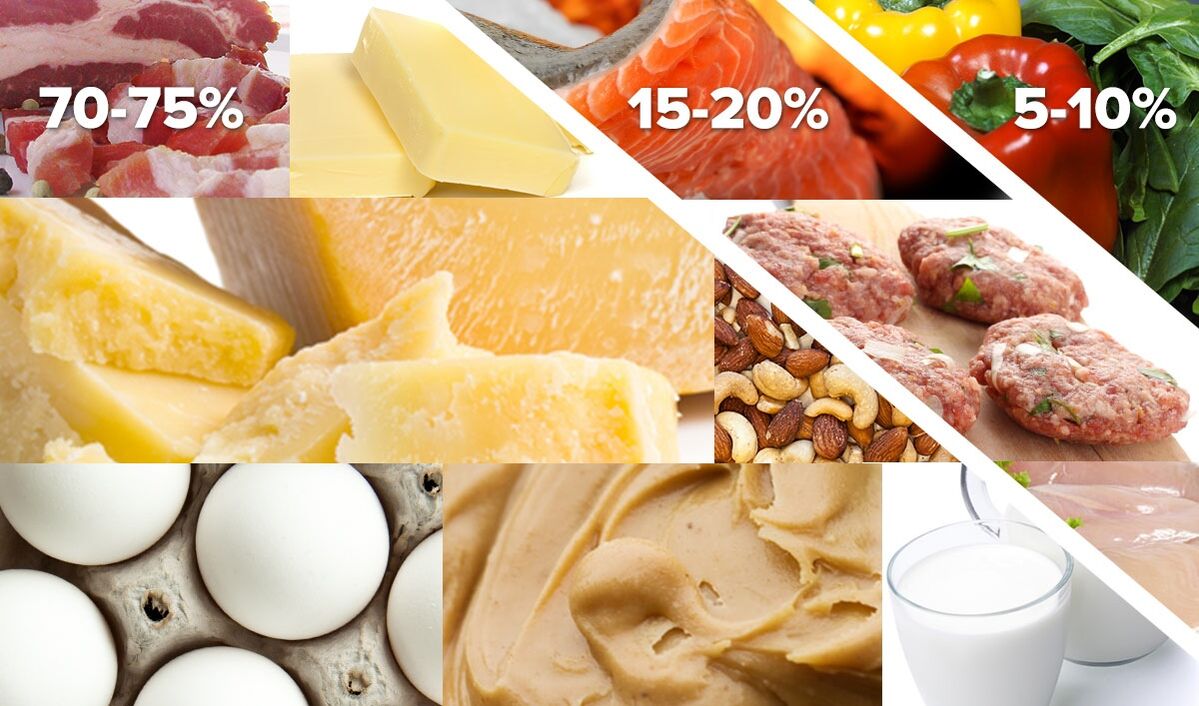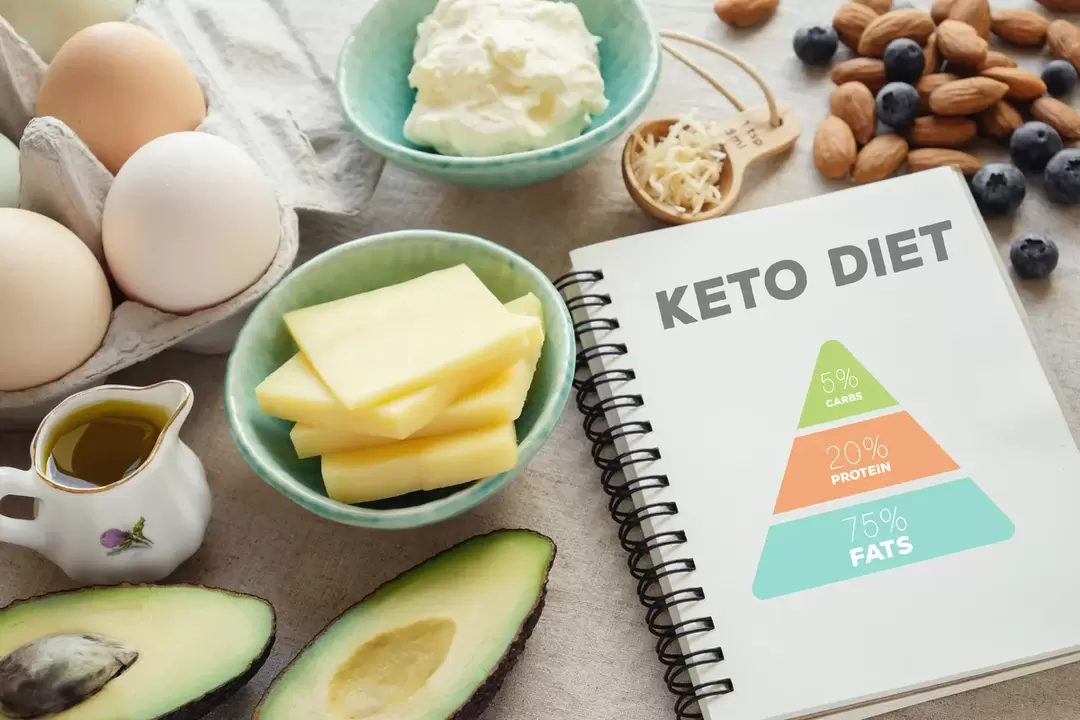The keto diet was originally intended for disease prevention, but today it is effectively used for weight loss. Its essence lies in a sharp decrease in the amount of carbohydrates consumed, as a result of which the energy obtained from the breakdown of body fat is consumed.
When planning to use a keto diet to combat excess weight, it is important to figure out who the proposed diet is shown to, whether there are contraindications, how to make a menu, what results can be achieved.
Keto diet - what is it?
The keto diet refers to a low-carbohydrate diet, with an increased amount of fat in the diet, leading to a state of ketosis. When distributing nutrients in the daily diet, it is worth allocating about 55% for fats, giving 35% to proteins and leaving only 10% for carbohydrates, and up to 8% should be obtained from fiber.
This ratio of nutrients is not typical for a traditional low-carbohydrate diet. However, the effect of its use is quite high. This is confirmed by the video below.
The innovative technique is used not only by amateurs, but also by professional athletes, including bodybuilders. For many, the keta diet has become a new way of life.
Diet Features
Initially, the diet, characteristic of the keto diet, was intended for patients who underwent rehabilitation after surgery. Later, the excellent results that were obtained were used in dietetics. By following a keto diet, a person completely refuses all fast, most complex carbohydrates, caffeinated drinks. As a result, the body goes into a stressful state, called ketosis, and begins to actively produce acetone.
In a state of ketosis, the body receives energy not from glucose, which comes daily with carbohydrates, but as a result of the breakdown of fats. Lipids are transformed into ketone bodies, fatty acids, which become the main source of energy. The production of ketone bodies begins only with a deficiency of glucose. This is the name of the molecules responsible for the transport of energy.
A sharp decrease in carbohydrate intake leads to an increase in the rate of release of fatty acids from the body's reserves. Most of the acids enter the liver, where, after oxidation, it is transformed into ketone bodies. Thanks to this, the body receives the necessary energy. Ketones easily cross the blood-brain barrier, ensuring efficient brain function in the absence of glucose.
The state of ketosis can also be achieved with the help of fasting. However, a prolonged lack of micro, macro elements causes serious health problems. The ketogenic diet allows you to lose extra pounds without harming the body.
Key Principles of the Ketogenic Diet

The keto diet is considered a universal way to improve your health, it is recommended for oncology, epilepsy, helps to get rid of subcutaneous fat, improves relief when playing sports. When compiling a diet, it is recommended to adhere to the following criteria:
- minimal consumption of foods containing carbohydrates;
- exclusion from the diet of sugar, sugar-containing foods;
- compliance with the drinking regime;
- consumption of quality fats;
- entering a state of ketosis.
If the principles of ketogenic nutrition are observed, metabolic processes are reorganized. The body receives the necessary amount of energy, and unwanted fat reserves melt away. Due to the absence of carbohydrates in the diet, insulin surges are excluded, and the process of weight loss is accelerated.
What results can be obtained

The methodology of ketogenic nutrition is quite controversial. Its effectiveness is due to the following features:
- after the body enters a state of ketosis, the rate of transport of fats for subsequent use in the form of energy increases significantly;
- the transformation of fats, proteins (gluconeogenesis) requires much more energy than the transformation of carbohydrates, respectively, the daily calorie consumption increases;
- despite the absence of carbohydrates in the diet, the feeling of satiety does not leave those who use the keto diet.
By following the basic principles of diet formation, it is easy to lose weight without experiencing constant hunger.
Types of keto diets

Experts distinguish between three types of ketogenic nutrition:
- The classic diet is the most popular option, which involves compiling a diet according to standard principles. The menu includes the maximum amount of fat, medium - proteins, low - carbohydrates. This option is relevant for those who lead a sedentary lifestyle, do not plan to increase the level of physical activity.
- Targeted - carbohydrates are consumed at certain times of the day in a strictly limited amount. Carbohydrate loading is allowed only on training days to increase endurance, strength performance, replenish energy reserves.
- Cyclical - this type of diet is similar to the protein-carbohydrate alternation. Loading carbohydrates is allowed only on days of high physical activity, with a busy work schedule, in other difficult situations. On loading days, the amount of carbohydrates should not exceed 7 g per kilogram of weight, and the amount of fat is reduced by increasing the amount of protein food.
A cyclical type of diet is recommended for professional athletes, people working with high mental, physical stress, during periods of illness, serious workload.
When choosing a type of diet, you should start with the classic version, and in some periods switch to targeted, cyclic types.
Indications for the keto diet

Ketogenic nutrition is relevant for those who want to reduce weight without additional physical exertion or adjust body weight, provide relief without strength training, muscle building. The easiest way to maintain such a diet will be lovers of fatty foods, since they will not experience discomfort after adjusting the diet.
The technique is especially popular among athletes with a large number of aerobic loads, if necessary, a large repetition of exercises with low weight. Due to the lack of glycogen, strength training will be difficult.





























